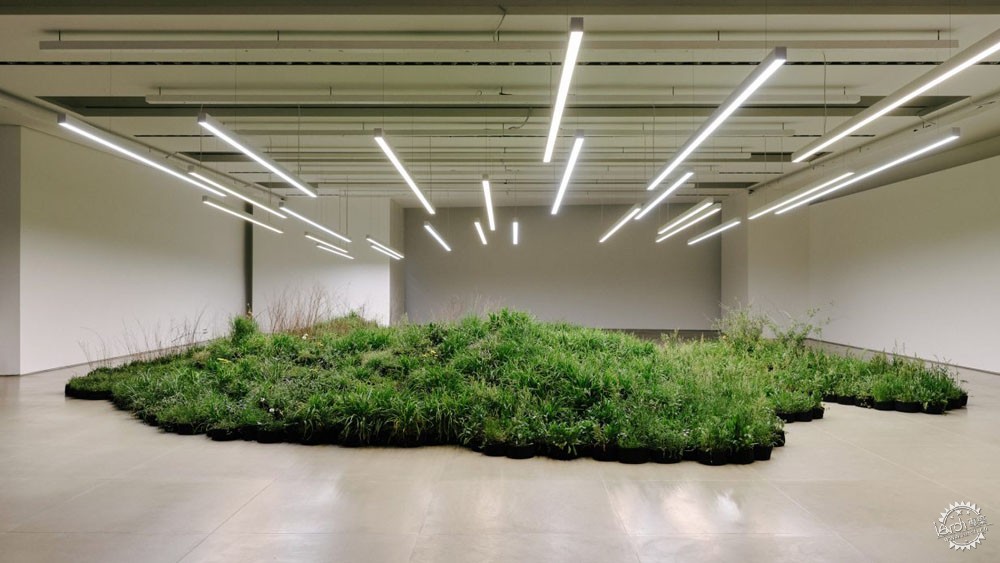
Linda Tegg用本土植物装饰了Jil Sander米兰总部大楼
Linda Tegg fills Jil Sander HQ in Milan with "spontaneous plants"
由专筑网蒋晖,王雪纯编译
澳大利亚艺术家Linda Tegg在吉尔·桑达(Jil Sander)位于米兰的总部大楼里设计了一件由城市中的植物所组成的十分有生命力的作品。
在米兰设计周期间,Tegg与时尚品牌的联合创意总监Lucie和Luke Meier合作设计了该作品。
墨尔本的艺术家与花园设计师MatteoFoschi利用米兰的一些废弃的工业用地进行花园设计,她将这一设计称为“城市中的野蛮生长”。
Australian artist Linda Tegg has created a living installation inside Jil Sander's headquarters in Milan, using plants gathered from around the city.
Tegg worked alongside the fashion brand's joint creative directors, Lucie and Luke Meier, to develop the Adjacent Fields installation, on show for the duration of Milan design week.
The Melbourne-based artist explored some of Milan's abandoned industrial sites with garden designer Matteo Foschi to source what she calls "spontaneous plants" that grow wild in the city.
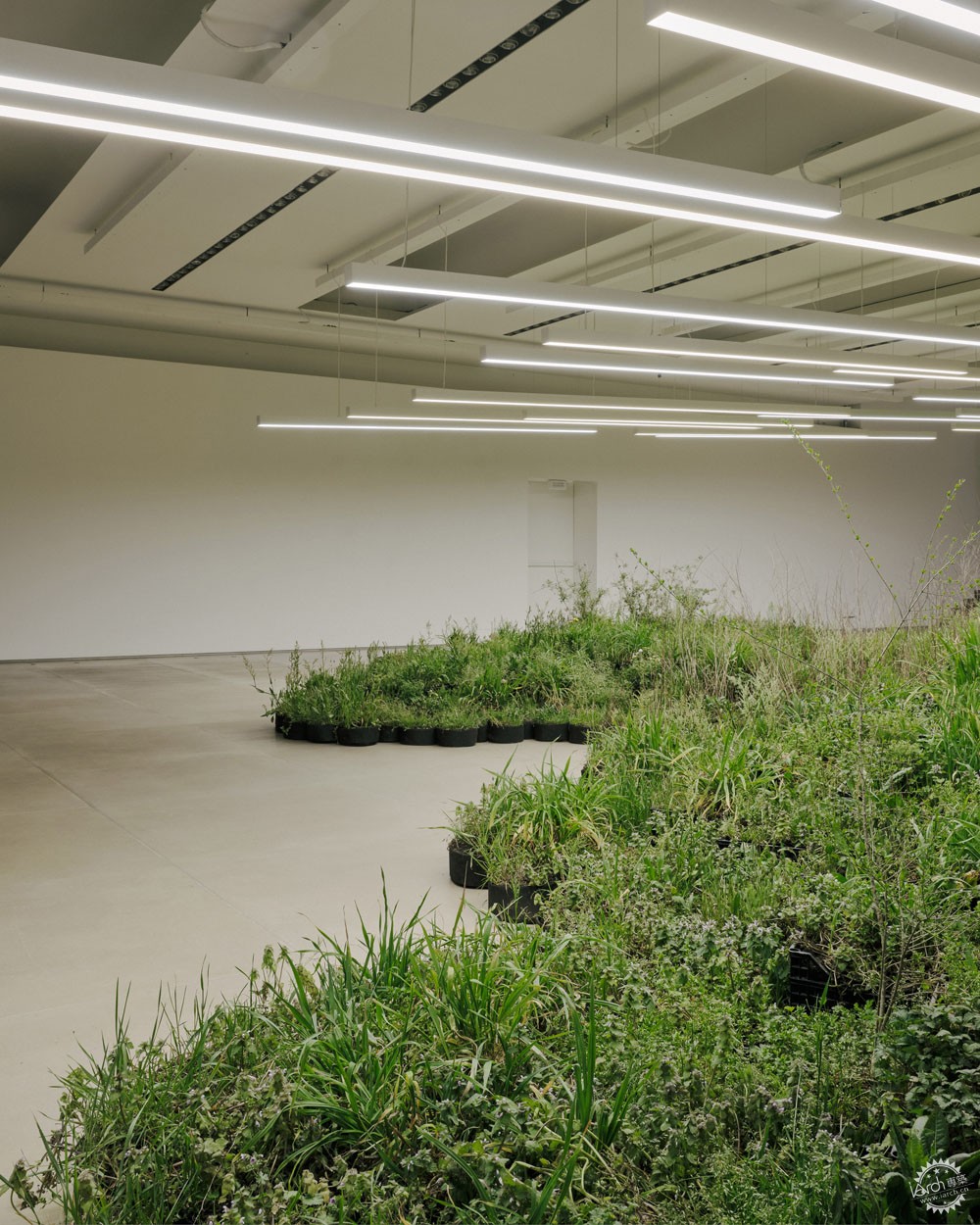
该设计中所用的植物皆来自米兰/The installation uses plants gathered from around Milan
Tegg的作品是为了提高我们对身边常常被忽视的植物的认识,并鼓励观众重新考虑自己与大自然的关系,在意想不到的环境中与植物密切接触。
“我非常感兴趣的是,我们是如何形成自然的看法,而自然又意味着什么。”她告诉Dezeen编辑。
“我的很多作品都是试图消除距离,那些我们仅凭经验判断事物,从而与事物之间所形成的距离。”
Tegg's work seeks to enhance our appreciation of these undervalued species and encourages the viewer to reconsider their relationship with nature by bringing them into close contact with plants in surprising contexts.
"I'm very interested in how we form our opinions about what's natural and what nature means," she told Dezeen during a private tour of the exhibition.
"A lot of my work is about trying to undo some of the alienation we have if we only touch things through mediated experiences."
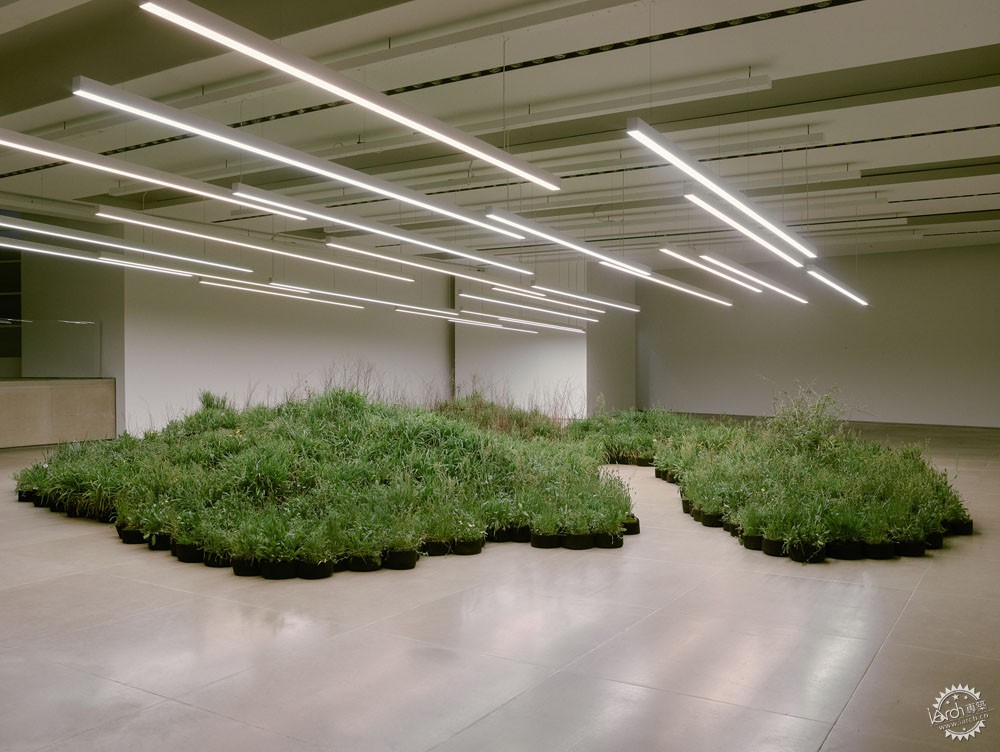
作品中的植物包括了苔藓,多汁植物,黑莓,普通的七叶草,天竺葵,常春藤,水肺草和野生鼠尾草/It includes mosses, succulents, blackberry, common chickweed, geranium, ivy, scutch grass and wild sage
邻近的田野里种植了包括苔藓、多汁植物、黑莓、普通的鹰嘴草、天竺葵、常春藤、水肺草和野生鼠尾草等各种物种,它们横行霸道地生长在人行道间、建筑物的裂缝处或土地的裂缝间。
通过将这些植物从城市环境中移除,并将它们放置在一个类似画廊的环境中,就赋予了这些植物一个新的身份,同时也有助于促进人们对城市中自然环境的更深层次的欣赏。
“这些植物既不奇特,也不壮观,更不具有任何的经济价值,” Tegg解释道。
“它们与我们生活在同一个空间中,却常常被我们所忽略。但当这些生物被放置在我们生命的中心时,当我们把它们置于我们的关注之下时,会发生什么?”
Adjacent Field brings together species including mosses, succulents, blackberry, common chickweed, geranium, ivy, scutch grass and wild sage, which grow up through the pavement, through cracks in buildings or on disused patches of land.
By removing them from their urban context and arranging them in a gallery-like setting, the plants take on a different status and help to promote a deeper appreciation of nature in the city.
"These plants are neither singular, spectacular or of any monetary value," Tegg explained.
"They exist alongside us, often on the peripheries of our perception. What happens when these beings are brought to the centre of our lives, when we take them into our care?"
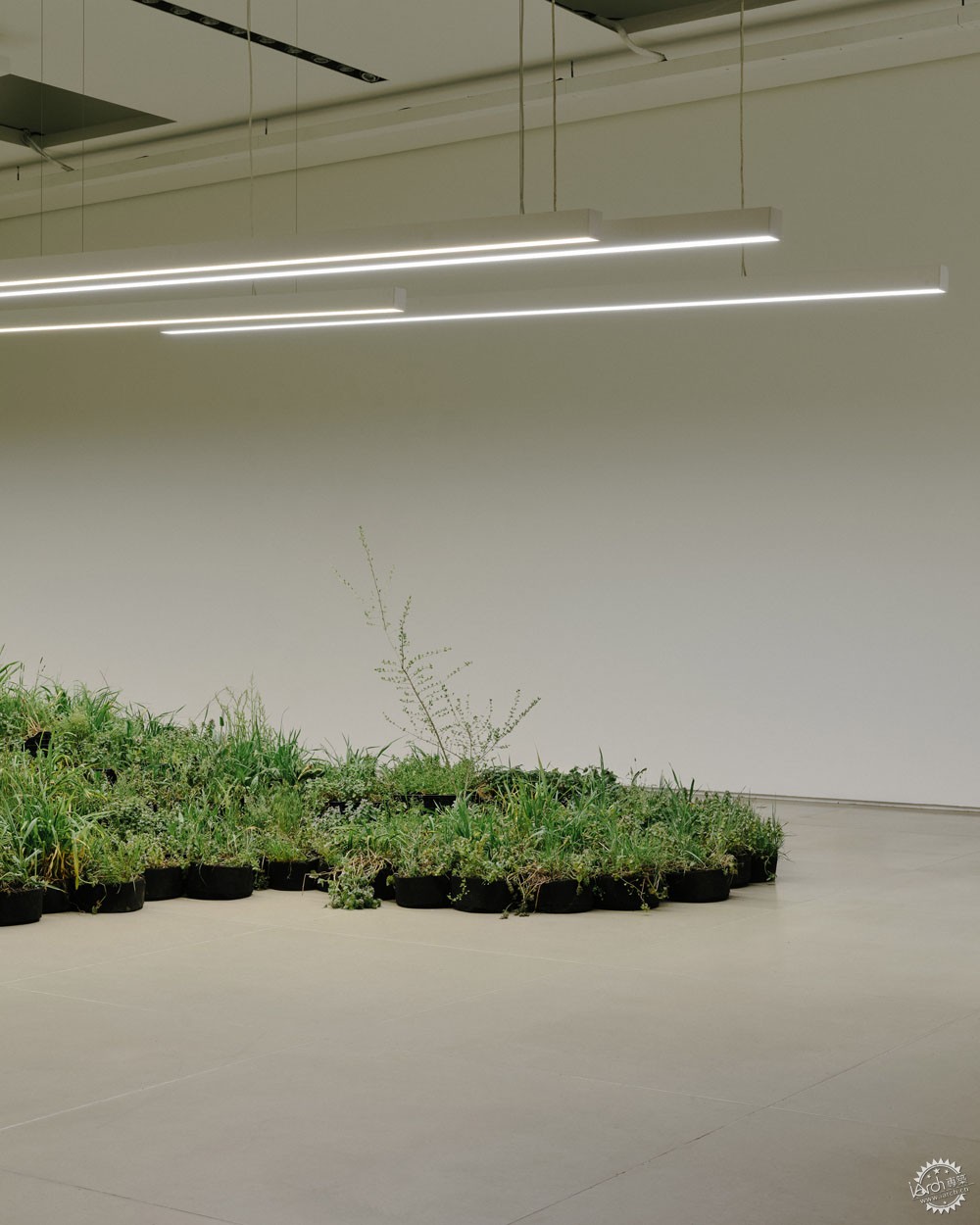
这些植物就像一系列岛屿一样排列/The containers are arranged like a series of islands
在安装的过程中唯一需要使用的其他材料就是标准盆套和土工布袋,用来装这些绿色植物生长所需的土壤。
盆套的布置方式像一系列的岛屿,在它们的中间形成小径,这样工作人员和游客就可以在艺术品中漫步,近距离的闻到树叶的气味,观察植物中的小昆虫。
Tegg解释说,该艺术品的配置并不是经过精确的规划的,而是从一种愿景中演变而来的——那就是要保持同植物的亲近性。
“装置只是使用了一种模块化的组装系统,”她说。“这其中涉及到一些摆放的逻辑,但我们无法设计它最终的外观;因为这一切都是为了让植物保持天性。”
The only other materials used in the installation are standard nursery crates and geotextile bags containing soil required to support the greenery's growth.
The containers are arranged like a series of islands that create paths in between, so staff and visitors can stroll through the artwork, getting close enough to smell the foliage and observe small insects living among the plants.
Tegg explained that the artwork's configuration was not precisely planned, but rather evolved from a desire to maintain the proximity of plants that were taken from the same location.
"They're just sort of assembled using this quite modular system," she said. "There is some editing involved but ultimately we couldn't plan how it would look; it's all about keeping the plants together as we found them."
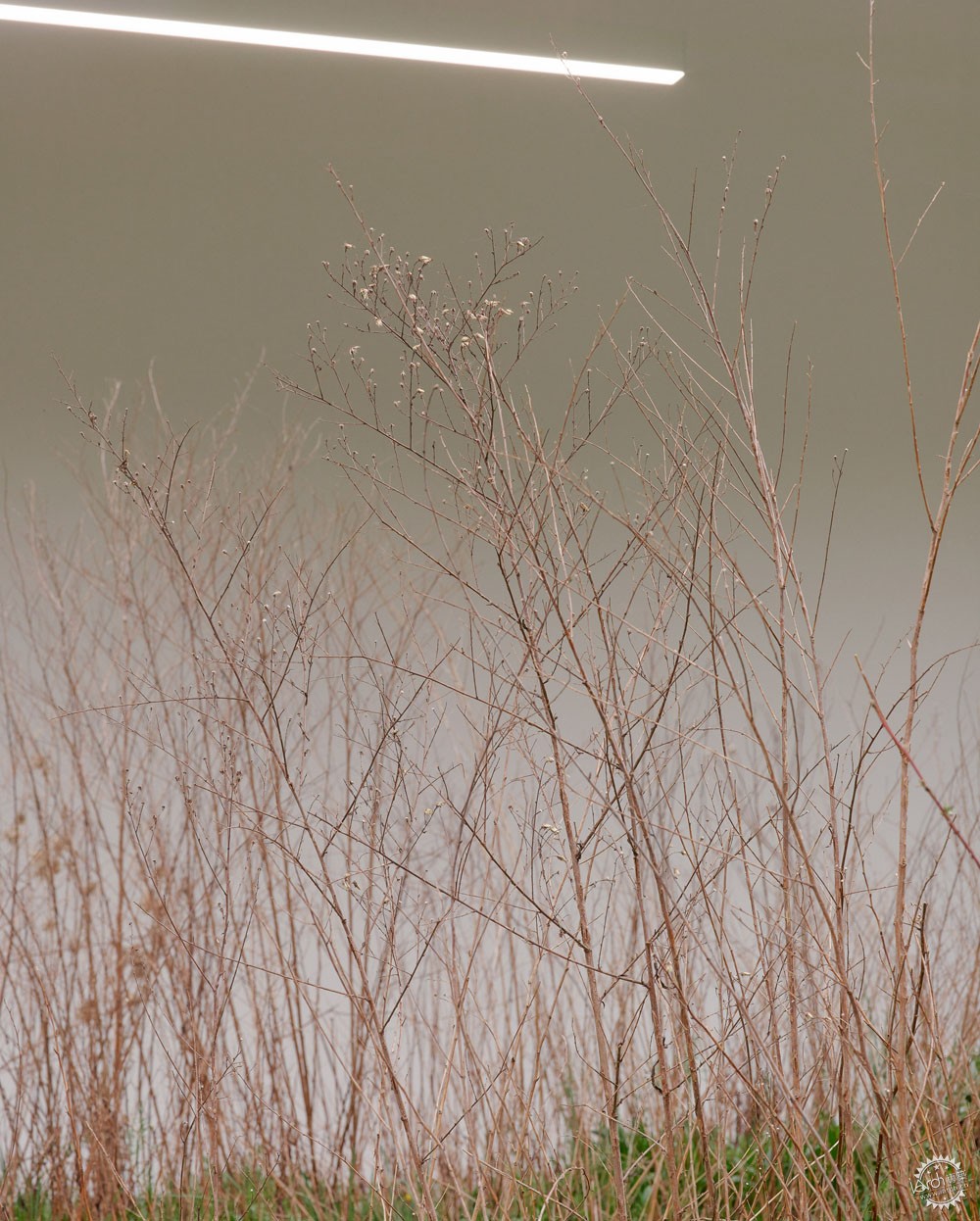
该设施促进了人们对城市自然的更深层次的欣赏/The installation promotes a deeper appreciation of nature in the city
Nic Burnham公司开发的Ndylight照明装置提供了合适的发光强度和光色以维持植物的生长。
在项目的研究阶段,Tegg的丈夫和合作者DavidFox拍摄了记录城市内的植物,这些照片被编辑成一本大开本的书,展示在靠近设施的另一个房间里。
他所拍摄的照片也陈列在Jil Sander's Milanese旗舰店的橱窗里,在那里他们提供了另一种装置。
A lighting installation by Nic Burnham of NDYLight was developed specifically to provide the correct intensity and spectrum of light to support the plants' growth.
During the research phase of the project, Tegg's husband and collaborator David Fox took photographs documenting the plants around the city, which are compiled in a large-format book presented in another room adjacent to the installation.
His images are also on display in the windows of Jil Sander's Milanese flagship store, where they provide an alternate but complementary view of the installation
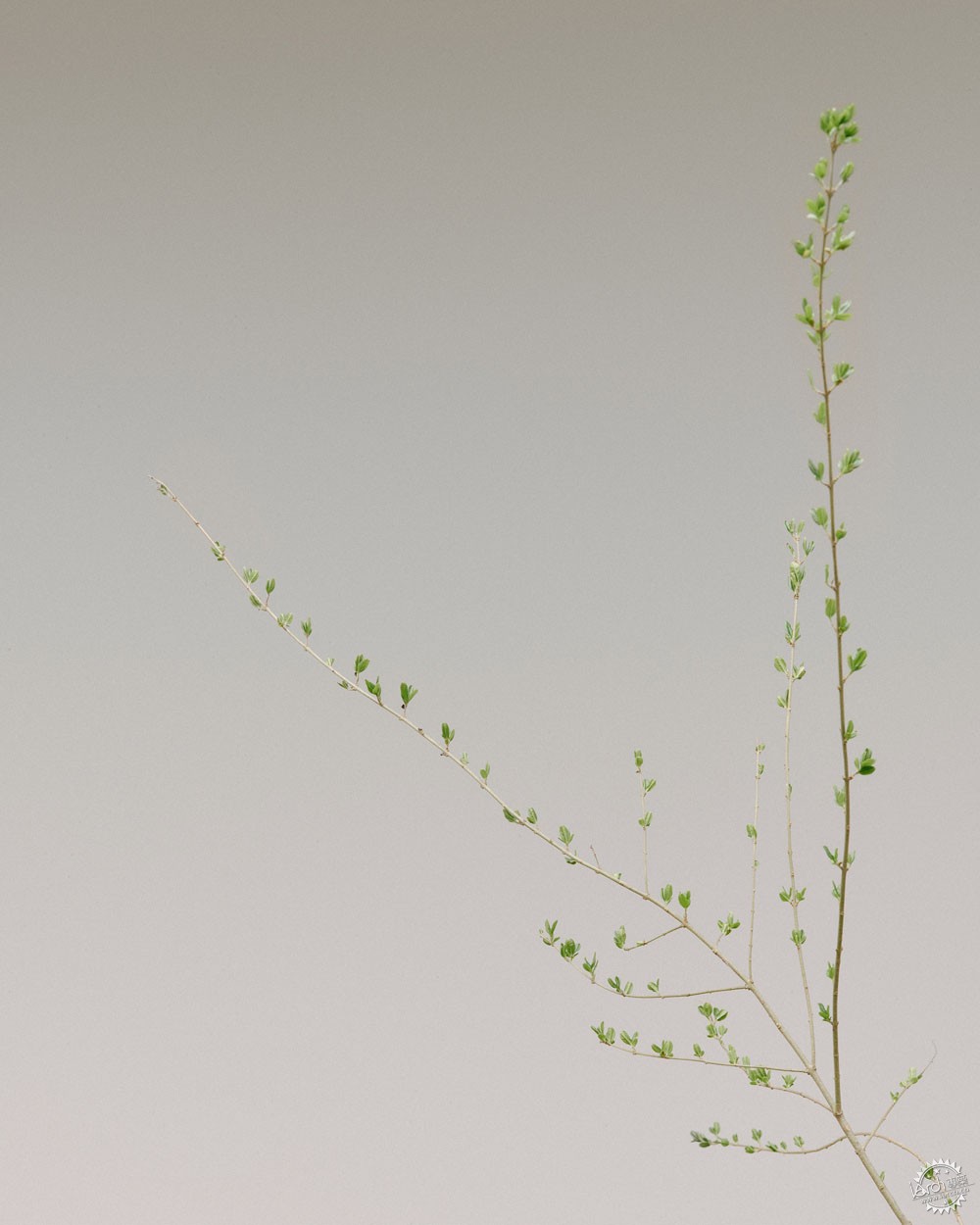
经过米兰的设计,它将被重新设计成了一个更小的可永久保留的版本/After Milan design it will be reconfigured into a smaller permanent version
这些艺术品在4月14日之前已向公众展出。在此之后,它将被重新设计成一个较小的版本,并留在工作室,而剩余的部分则将被退回到他们的原处。
永久性的保存将需要Jil Sander总部工作人员的培养,其目的是不断提醒人们,必须以更可持续的方式与自然和谐地工作和生活。
Lucie and Luke Meier补充说:“环境问题需要越来越多的重视,而不是仅仅只是一种趋势。”
“我们需要做好准备,以不同的方式做出改变,甚至可能是让人不舒服或不方便的行为模式。我们需要找到一种与自然和谐共存的方式。永久保存的植物装置将是一个不断的提醒装置,是我们意识的催化剂。”
这是Tegg在芝加哥设计的第三件室内作品。这幅作品是用当地杂货店里的谷类植物制作的。2018年,她在威尼斯建筑双年展的澳大利亚展馆里创作了一件作品——用1万种本地植物重建了澳大利亚的一片草原。
The artwork is on display to the public until 14 April. After that it will be reconfigured into a smaller version that will remain in the studios, with the surplus plants being returned to the sites they were sourced from.
The permanent assemblage will require nurturing by the staff at Jil Sander's headquarters, and is intended to provide a constant reminder of the need to work and live more sustainably, in harmony with nature.
"Environmental issues seem, and need to be, more and more well rooted, rather than a trend," added Lucie and Luke Meier.
"We need to be ready to behave in different ways, even uncomfortable and inconvenient, to make a change. We need to find a way to coexist well with nature. The permanent installation of spontaneous plants will be a constant reminder, a catalyst for our awareness."
This is the third indoor work Tegg has developed, following a piece in Chicago created using plants sprouted from grains sourced at local grocery stores, and a work she produced in the Australian Pavilion at the Venice Architecture Biennale in 2018, which used 10,000 indigenous plants to recreate an area of Australian grassland.
|
|
